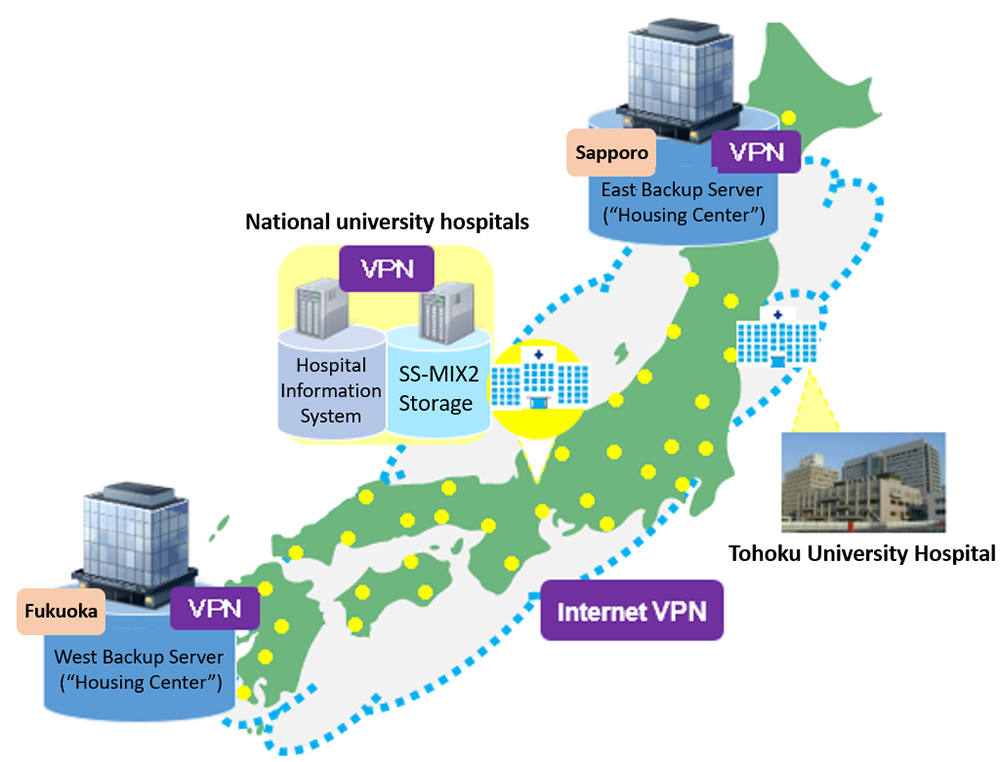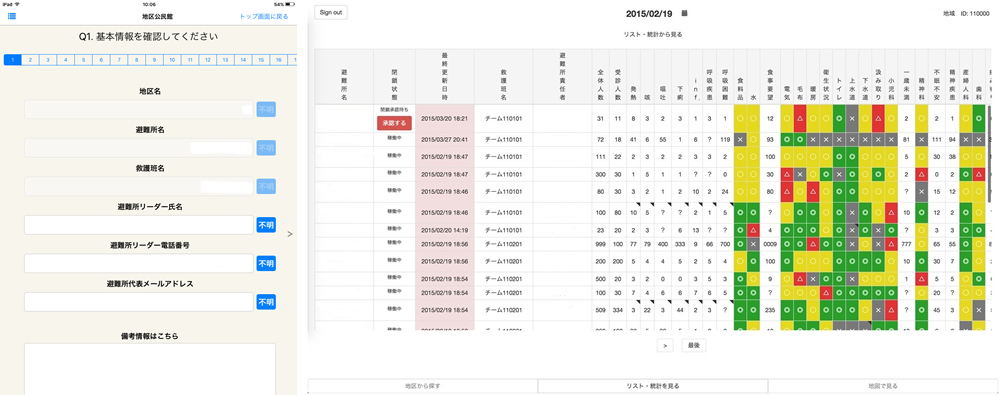Backup System during a Disaster
The Gemini Project
Tohoku University Hospital is involved in a project to back up clinical data of national university hospitals. The "Gemini Project," launched by the Ministry of Education, Culture, Sports, Science and Technology in 2013, aims to back up clinical data as well as medical information systems at two data centers located in the east and west areas of Japan. This mechanism helps rapid recovery of medical information systems of each university hospital after a disaster brings devastating damage to them. For better use of the mechanism, a working group was set up. As a member of the working group, I am working with other members to establish procedures for the operation of the mechanism.

The Miyagi Medical and Welfare Information Network (MMWIN)
In addition to the Gemini Project, another backup system for clinical data has also been established in Miyagi prefecture. We, Tohoku University Hospital, proactively cooperate with other organizations and agencies to promote its utilization. More specifically, we recruit patients, suggest ideas related to its utilization, and provide technical support for the system. At the request of the prefectural government, amidst the COVID-19 pandemic, we utilized information sharing systems in order to coordinate between medical care facilities and headquarters in order to ensure that COVID-positive patients were promptly and adequately treated.
Emergency Communication System
With the advancement of information and communication technology, medical activities during disasters are increasingly dependent on communication networks. After the Great East Japan Earthquake, however, all means of communication were cut off, and congestion in communication networks increased. The situation reminded us of the importance of developing a means of communication that can be used in an emergency (e.g., satellite communication systems). To deal with this issue, the Ministry of Internal Affairs and Communications held study meetings from November 2015 to June 2016. As a member of the study group, I worked with other members to make recommendations on emergency communication systems.
Mobile Assessment System
After the Great East Japan Earthquake (GEJE), many people in affected regions were forced to stay in evacuation shelters. To ensure the health of evacuees in shelters during such disasters, it is essential to assess several factors surrounding them (e.g., nutritional status of evacuees, sanitary conditions of shelters, the number of patients with diseases, etc.) and deal with the evacuees based on the assessment. With an aim of collecting and analyzing these kinds of data effectively, we have developed a mobile assessment system under the supervision of Professor Tadashi Ishii, who worked as a leader in the medical activities in Ishinomaki City after the GEJE. This system in mobile devices provides a standardized format, which enables us to compare data obtained from several shelters. Furthermore, based on the knowledge gained by the use of the system, we have also developed algorithms for the management of evacuation shelters.

Electrocardiogram (ECG) on QR code
Electrocardiogram (ECG) is an indispensable tool to diagnose cardiac disease. To improve the portability and availability of ECG data, we have developed a system to convert ECG data into CR codes. This system enables us to use ECG data even when we cannot use Hospital Information Systems (HIS) or Picture Archiving and Communication Systems (PACS). It is expected to be a useful tool for screening of heart disease in a time of disaster. We won the Distinguished Poster Award for this study at MedInfo2013 in Copenhagen, Denmark.
© 2020 Department of Medical Informatics, Tohoku University School of Medicine
